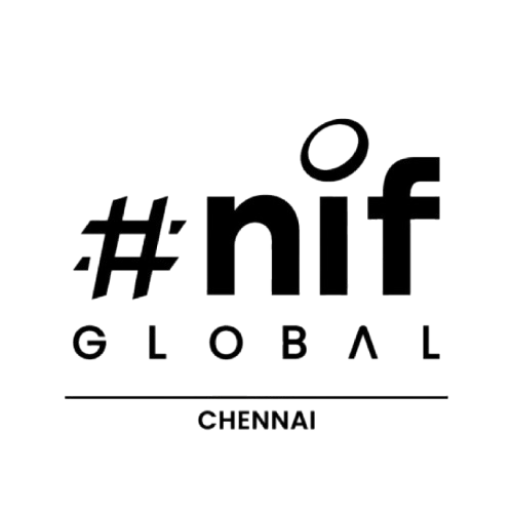Hello, fabulous fashion dreamers! Ever stood in front of a stunning boutique window, or scrolled Fashion through a breathtaking designer collection online, and wondered about the magic behind it all? It’s more than just beautiful clothes, isn’t it? It’s an intricate dance, a colossal symphony of creativity, craftsmanship, and commerce that brings those sartorial wonders to life.
For me, fashion has always been a kaleidoscope of stories, a vibrant tapestry woven from threads of individual expression and collective aspiration. But when I first started exploring this captivating world, I felt a bit lost in its vastness. It seemed like an enormous, glittering enigma. That’s why I’m so thrilled to pull back the curtain today and reveal the structured yet incredibly dynamic universe of the fashion industry. Whether you’re a student sketching your first designs, an enthusiast craving deeper knowledge, or a career seeker eyeing your perfect niche, understanding the foundational *fashion industry segments* is your ultimate compass. Let’s embark on this journey and decode the four key sectors that make the fashion world spin!
The Unseen Symphony: Where Does Every Stitch Begin? (The Production Segment)
Have you ever paused to consider the journey of the fabric caressing your skin? From the softest cotton t-shirt to the most intricate silk gown, every garment begins its life long before it reaches a designer’s sketchpad. This is the realm of the Production segment, a colossal, global engine that’s all about raw materials, manufacturing, and the complex supply chain that transforms fibers into finished goods.
Imagine vast fields of cotton, sheep grazing on rolling hills, or innovative labs perfecting sustainable synthetic fibers. This segment starts here, with the sourcing of raw materials. Then, these materials embark on a fascinating transformation: spinning fibers into yarn, weaving or knitting yarn into fabric, dyeing, printing, and finishing these textiles with precision. Finally, the fabrics are cut, sewn, and assembled into garments in factories across the globe. This intricate process requires a meticulous *fashion sector* of textile engineers, supply chain managers, quality control experts, and ethical sourcing specialists. For those seeking a *fashion career guide* focused on tangible creation, understanding the ethical implications of sourcing and manufacturing, from fair labor practices to sustainable production methods, is paramount in today’s conscious market. It’s a segment where innovation in materials science and efficient logistics can make a monumental difference.
The Canvas of Creativity: Who Paints Tomorrow’s Trends? (The Design Segment)
If the production segment is the industry’s engine, the Design segment is its beating heart, brimming with vision and artistic flair. This is where ideas are born, where inspiration takes tangible form, and where the future of fashion is literally drawn into existence. Think of the dazzling runway shows, the innovative silhouettes, the fresh color palettes – they all originate here.
Beyond the glamorous image of a designer sketching in a chic studio, this segment involves meticulous trend forecasting, market research, and an acute understanding of cultural shifts. Designers don’t just create beautiful clothes; they tell stories, express identities, and respond to the needs and desires of their target audience. From haute couture and ready-to-wear to sportswear, accessories, and even costume design, there are countless specialized design roles. If you’re passionate about bringing imaginative concepts to life, a *fashion education* focused on design, pattern making, and garment construction could lead you to a fulfilling path as a designer, illustrator, or textile artist. It’s a challenging yet incredibly rewarding *fashion career guide* sector where creativity meets commercial viability, blending artistic intuition with strategic thinking.
Whispers and Visuals: How Do Desires Take Form? (The Marketing & Merchandising Segment)
Once a collection is designed and produced, how does it leap from the factory floor into your consciousness and onto your wish list? This is the magic of the Marketing and Merchandising *fashion industry segments*. They act as the crucial bridge between creation and consumption, tasked with communicating a brand’s vision, cultivating desire, and ensuring products are available and appealing to the right audience.
Imagine the captivating ad campaigns that make you stop scrolling, the meticulously curated window displays that lure you into a store, or the strategic placement of items within an e-commerce site. This is all part of the marketing and merchandising efforts. It encompasses branding, advertising, public relations, social media management, visual merchandising, and buying. Merchandisers analyze market trends, consumer behavior, and sales data to decide what products to stock, in what quantities, and at what price points. Marketing professionals craft compelling narratives around brands and collections, creating an emotional connection with consumers. For those with a knack for communication, strategy, and understanding consumer psychology, a *fashion career guide* into roles like brand manager, visual merchandiser, buyer, or PR specialist offers dynamic opportunities to shape the perception and success of fashion labels.
The Personal Connection: Where Do Stories Come to Life? (The Retail & Consumption Segment)
Finally, we arrive at the most visible and interactive segment: Retail and Consumption. This is where fashion truly comes alive, where the journey culminates in the hands (or on the bodies) of the consumer. It’s the point of sale, whether in bustling department stores, intimate boutiques, or the vast digital landscape of online shopping, and it’s also about what happens *after* the purchase.
This *fashion sector* encompasses everything from sales associates providing personalized styling advice to e-commerce platforms offering seamless shopping experiences. But it extends beyond just selling. It delves into customer service, loyalty programs, and understanding the ever-evolving consumer behavior. With a growing emphasis on sustainability, this segment also embraces the secondary market – think consignment stores, rental platforms, and the entire ethos of mindful consumption and circular fashion. If you love direct interaction, understanding individual style, or shaping the shopping experience, roles in retail management, personal styling, e-commerce operations, or even becoming a fashion influencer could be your calling. It’s where the stories woven by designers are adopted and retold by individuals, making fashion a truly personal and ever-evolving narrative.
See? The world of fashion is so much more than just fleeting trends and glamorous parties. It’s a complex, interconnected ecosystem, each segment vital to the overall flow and success of the industry. From the invisible supply chains to the vibrant retail spaces, every step offers a unique blend of challenges and rewards.
So, whether you’re dreaming of sketching the next iconic dress, revolutionizing sustainable production, strategizing a killer marketing campaign, or helping someone find their perfect style, there’s a place for you. Understanding these *fashion industry segments* is your first step towards navigating this exciting landscape and discovering where your passion truly aligns. Which segment sparks your imagination the most?


